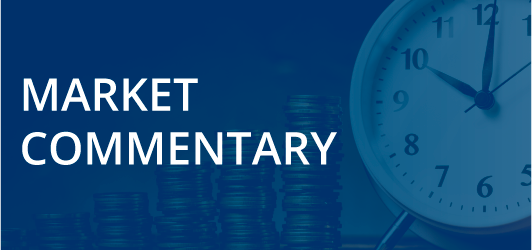Naisbitt King Monthly Bond Commentary January 2024
- Naisbitt King
- Jan 5, 2024
- 3 min read

January 2024
So here we are in a new year and hopefully a great year is ahead for all of us. After the previous 2 years of turmoil, last year proved a period of strong recovery in bond markets, particularly in the last quarter. As the year went on, and with the possibility of lower inflation starting to be discussed, markets began to believe that central banks will continue to pause their rate hikes and hopefully start to bring their rates down in 2024. Corporate bond yields still look very attractive in our view, and perhaps curiously, despite last year’s strong performance, they are still higher than at the start of 2023 in many cases. Our client portfolios, despite their conservative short duration nature, performed extremely well last year, all beating their benchmarks.
The Federal Reserve, and other central banks’ policy rate decisions played, and will continue to play, a huge role in the fixed income market’s direction. Of course, America and the UK are both scheduled to have major elections this year, which may well have a bearing on all markets, but the downward direction of policy rates seems almost certain. Inflation remains the single biggest driver central bank rate decisions and bond yields. Commentators have mixed views on the pace of decline of the Fed funds rate with some believing the Fed’s rate could reach below 3.50% by year end. The market is currently pricing in first cuts in March. The UK is also predicted to see a fall in interest rates with The Bank of England rate a point lower than its current level to 4.25% by year end. The risks to these expectations remain geopolitical. An escalation of the Russia-Ukraine war, the conflict in the Middle East or China’s mounting aggression towards Taiwan could also prove to be significant drivers of market movers. In 2023 the U.S. 10-year benchmark government bond started out on a yield of 3.74% to end at 3.88% having hit 5% in October. Additional, because corporate fundamentals started from a position of historic strength we’re not expecting a significant amount of corporate defaults and downgrades.
Investment grade spreads have remained reasonably tight all last year, a peak of 163 basis points (bps) was reached during the banking crisis in March but by the end of the year high grade spreads fell to 104bps, their tightest since January 2022. The spreads on the high yield credit market hit the years’ high of 522bps in March, to end the year at 337bps. Given the strong tightening towards the end of the year we believe spreads will maintain current levels during most of the year.
The banking sector had a torrid time in the first quarter last year was in financials where the most significant events were caused by regional banking crisis in the U.S. which was quickly followed by the collapse of Credit Suisse when its AT1 CoCo bonds suffered a $17.3bn write-off. However, with convincing words from regulators in Europe, the UK and the U.S., the sector soon saw a strong recovery. By the end of the year dollar denominated junior bank debt in large significantly important banks, particularly U.S. denominated, was the best performing sector, enabling Barclays and UBS, Credit Suisse’s new owner, to launch hugely successful, large, CoCo bond deals.
The early trading days of 2024 have witnessed a risk off mood following the near euphoric rally as the year drew to a close. After such a strong performance we are reflecting and engaging in some selective risk reduction measures, giving us the potential to benefit should the early days weakness persist and extend.
Whilst volatility remains a constant threat, we do believe interest rates have peaked giving way to lower yield levels and therefore higher bond prices, from which portfolios will benefit.
Regards
Trevor Cooper FCISI
CIO Naisbitt King Asset Management

Comments